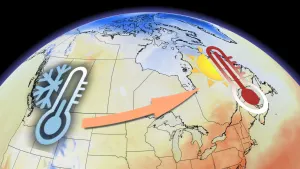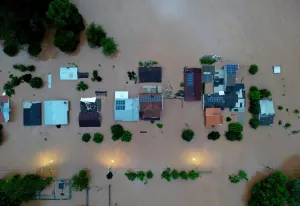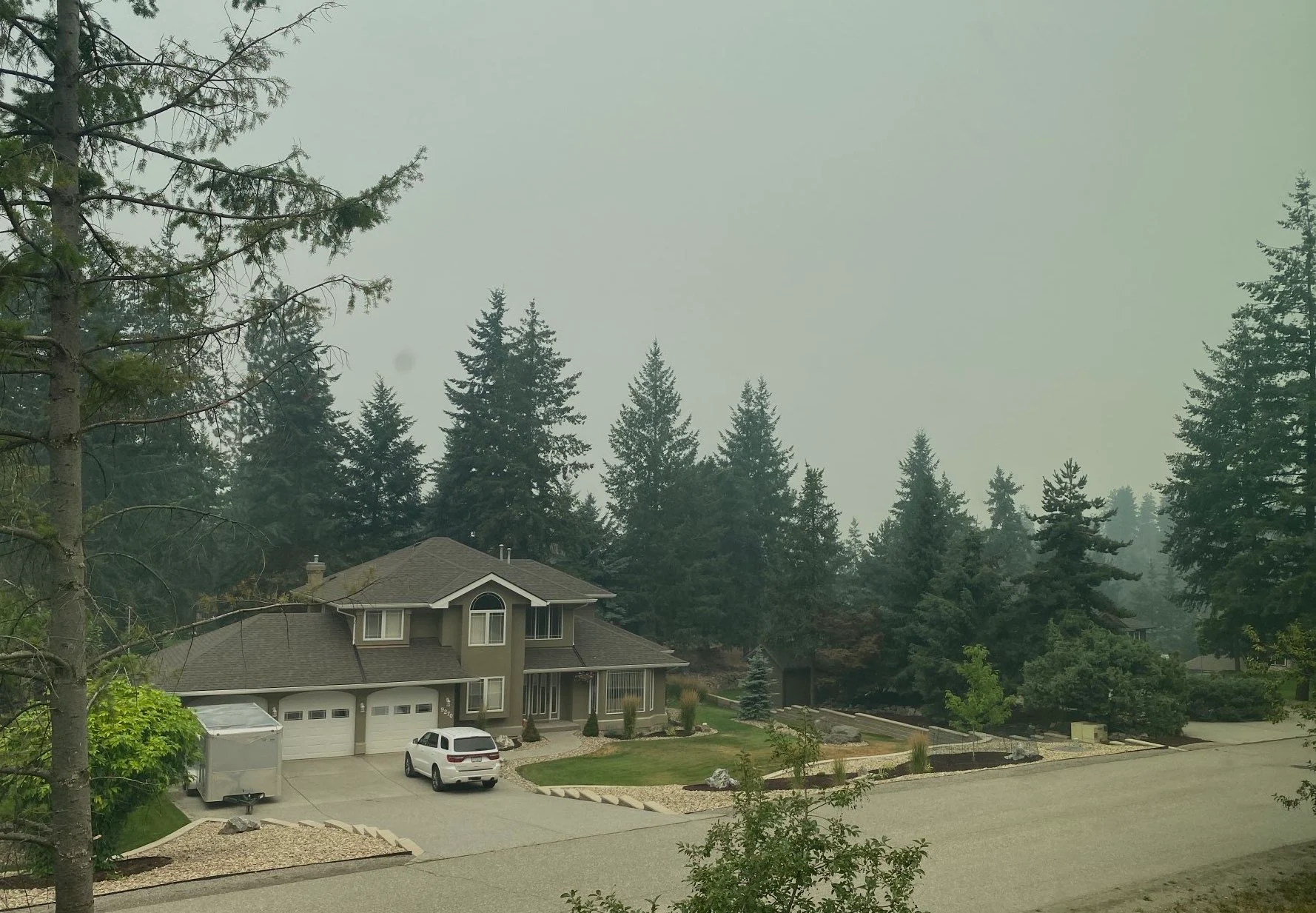
Air quality remains a serious health risk as wildfire smoke blankets B.C.
Hundreds of wildfires in B.C. and a stagnant atmospheric pattern are contributing to hazardous air quality.
Air quality remains a significant health risk this week across British Columbia, with some communities expecting "very unhealthy" to "hazardous" air quality over the next few days. According to the Government of British Columbia, there are 242 wildfires burning as of Monday afternoon, largely responsible for causing the hazardous air quality conditions.
High pressure along the Pacific coast and the Prairies are working together to sandwich the low-level smoke over British Columbia. An upper-level ridge is making the situation worse by preventing the smoke from rising and diverting the jet stream.
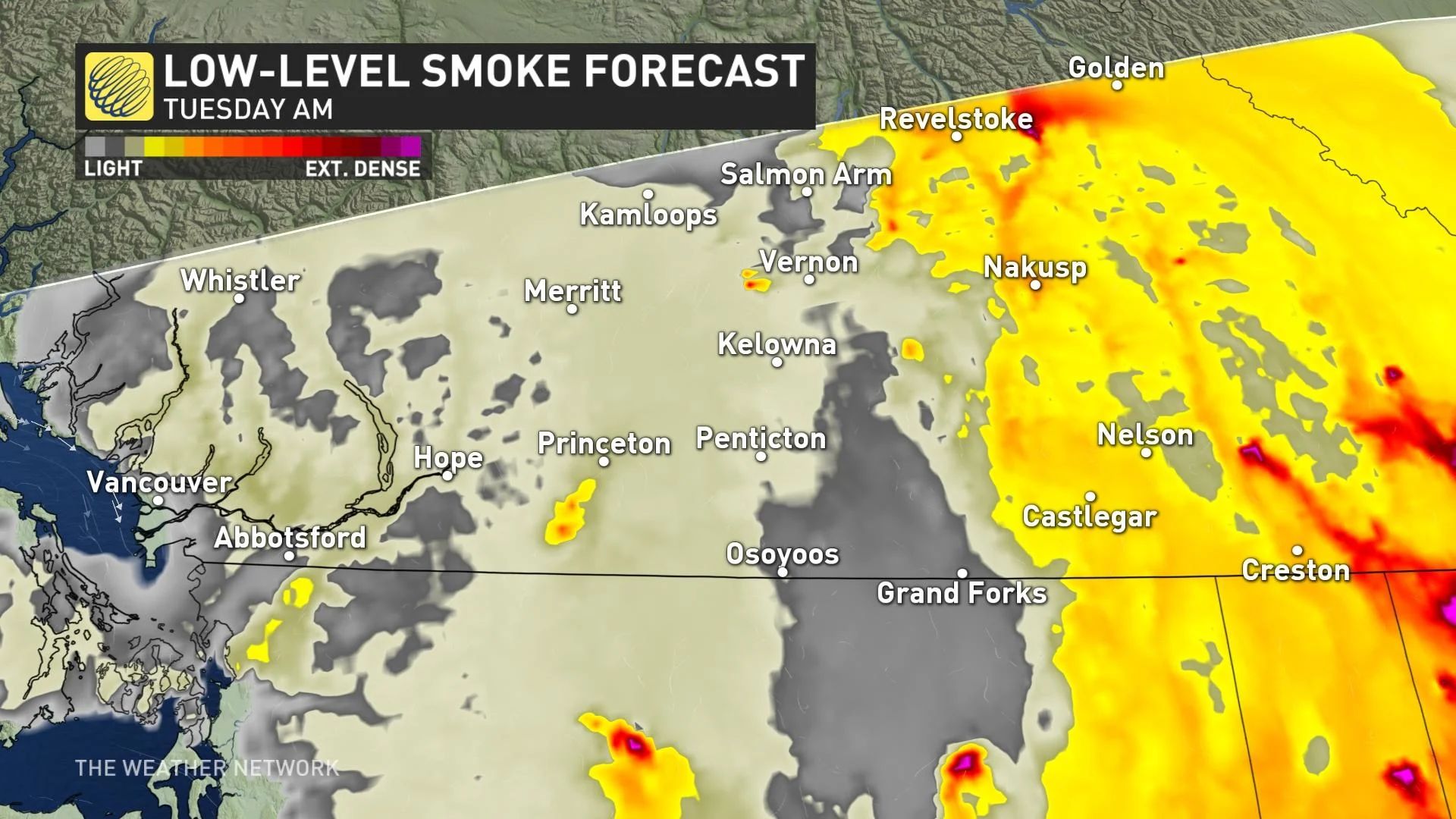
All of these atmospheric conditions will contribute to dangerous air quality that will continue this week.
“Extreme smoke a huge issue for crews. They have not been able to fly many days. Evacuation orders getting closer to my home, but the lake is in between. Smoke is thick, this is Day 8 like this,” Jaclyn Whittal, a meteorologist at The Weather Network, tweeted Monday. She is currently in the Okanagan Valley.
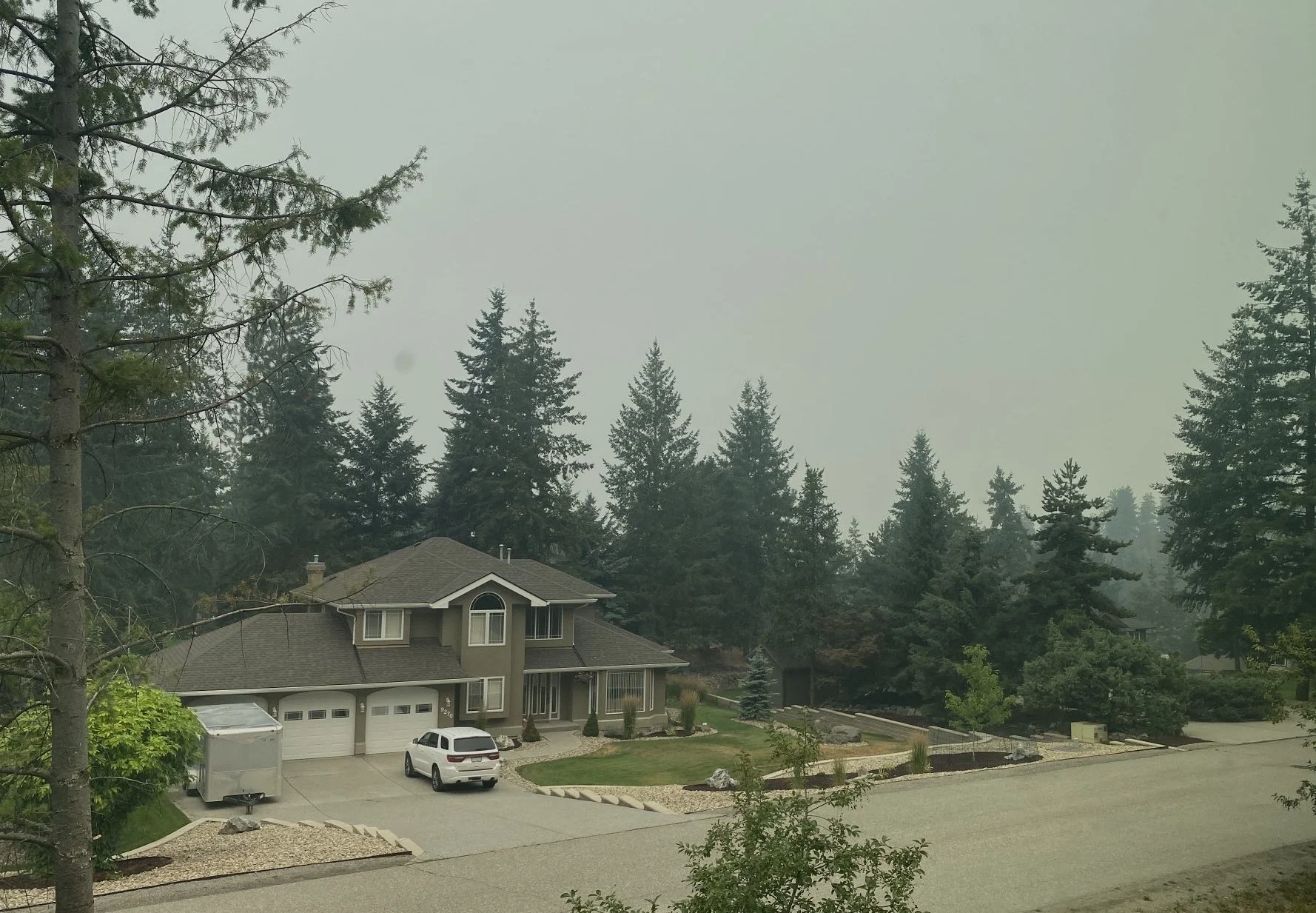
Wildfire smoke blocking out the sunlight in the Okanagan Valley. (Jaclyn Whittal)
Friday brought the worst air quality on Earth to British Columbia. The usual culprits in China, India and Iran were fair in comparison to the southern Interior. Castlegar, B.C., had a daily average air quality index of 415 --marking the third worst day in the past seven years and the first time two days have exceeded 400 in the same year. The Tuesday (July 27) index reading was 404.
Some of the most dangerous components in wildfire smoke are carbon monoxide and microscopic, ultrafine particles called PM 2.5, which are 2.5 microns in diameter or smaller and cause health complications when they enter the lungs or bloodstream.
“Individuals may experience symptoms such as increased coughing, throat irritation, headaches or shortness of breath. Children, seniors, and those with cardiovascular or lung disease, such as asthma, are especially at risk. If your home is not air-conditioned, be sure the house doesn't get too warm when doors and windows are closed to keep out smoke,” Environment Canada states.
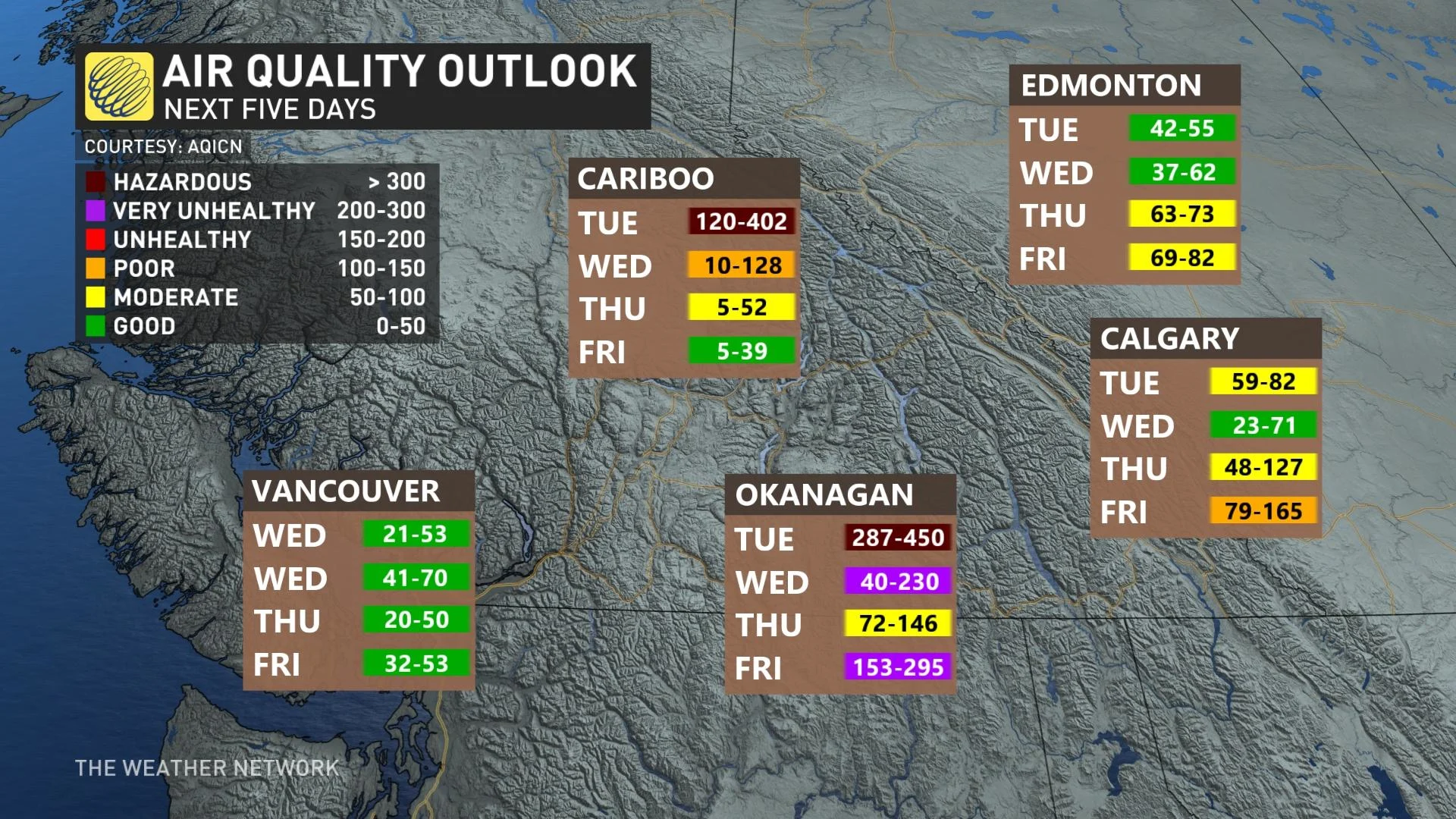
The Okanagan Valley is an area where conditions will be particularly dangerous this week, with no reprieve until Thursday, when levels are expected to improve somewhat.
An upper-level low will approach the Pacific coast by mid-week. This will provide more of an onshore and stronger winds aloft. This will help the situation in B.C., but will shift the majority of the smoke onto the Prairies.








